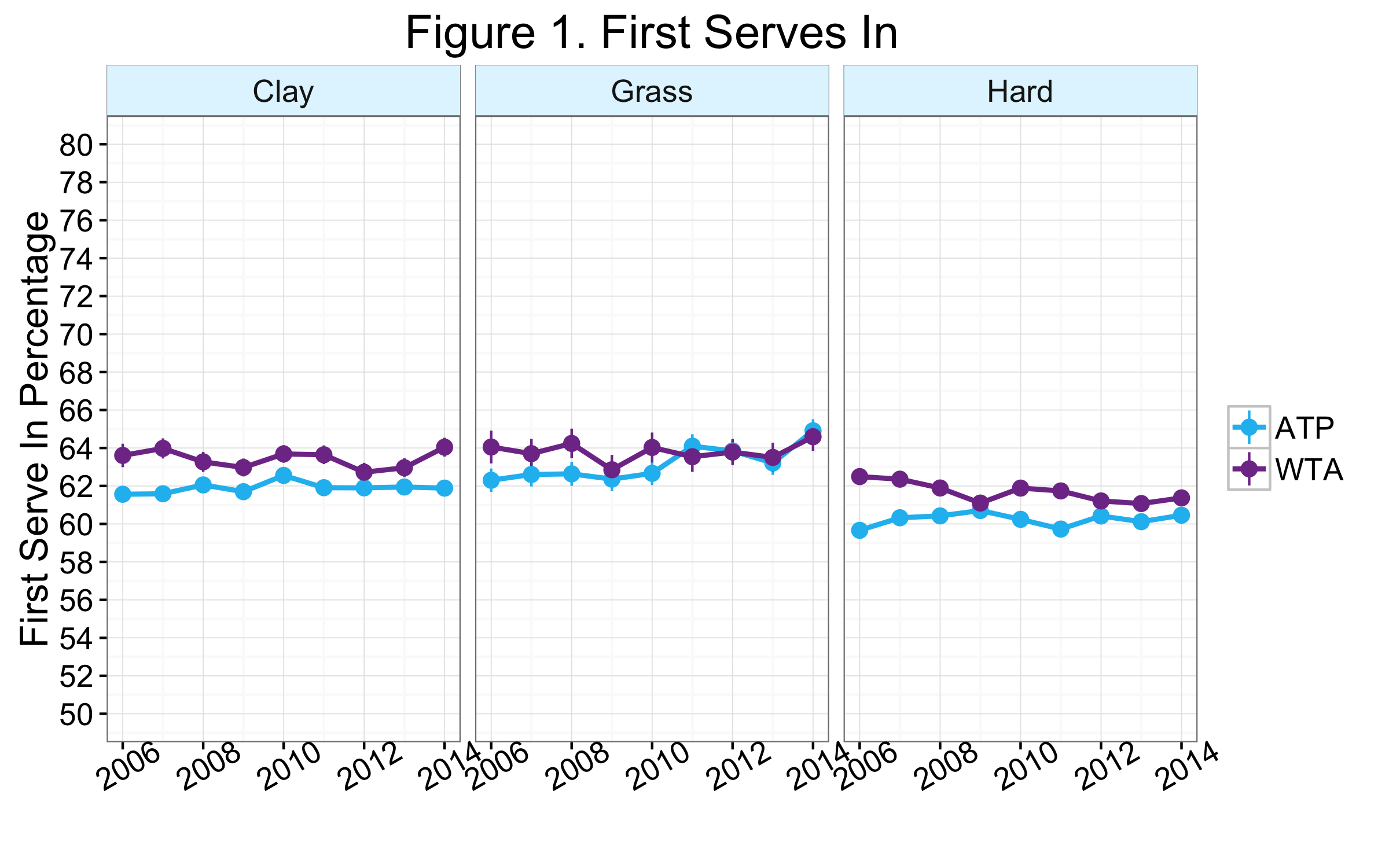Klaassen & Magnus's 22 Myths of Tennis— Myth 6
09 Apr 2016Raymond Moore’s display of sexism at this year’s BNP Paribas Open put a more intense spotlight on gender equality in tennis than any of us were expecting. The processing of his statements and resignation as tournament director prompted some insightful perspective-taking by former and current players. At the same time, it also encouraged more of the same old pitting of the WTA and ATP tours against each other.
With this backdrop in mind, I couldn’t help but cringe when I read myth 6 of Klaasseen and Magnus: ‘the probability that the service is in is the same in men’s and women’s singles’. These days, when so many comparisons of men’s and women’s tennis are an implicit attempt to find which is the superior sport, one gets fed up with making any sex-specific comparisons.
But we learn more about the sport by understanding how the men’s and women’s game are similar and how they are not; as long as these conclusions are backed up with real data that is. K&M were trying to do just that and took up this topic with genuine scientific interest, which, I think, makes their analysis worth revisiting.
Myth 6: ‘the probability that the service is in is the same in men’s and women’s singles’
Looking at data from the 1992-1995 singles matches at Wimbledon, Klaassen and Magnus conclude that women tend to get more first serves in (WTA = 60.8% versus ATP = 59.4%) but are no more or less effective than male players in hitting second serves in (WTA = 86.0% and ATP = 86.4%). Because a second serve that is not in is a double fault, this last comparison also tells us about the chance of a double fault on a second serve and how that chance differs between tours. Their study of serve performance at Wimbledon data leads to the conclusion that, when having to make a second serve, the chance of a double fault is statistically the same for top men and women singles players.
K&M also looked at the chance of a double fault on a service point. This is somewhat different than the chance of a double fault on the second serve because the chance of a double fault overall has to consider how often a player has to take a second serve. Either a high first serve percentage and/or a low double fault percentage on second serves could decrease the chance of a double fault on a service point when the server first steps up to the service line.
K&M found no meaningful difference in the chance of a double fault on a service point, and describe this result as ‘a remarkable fact, which requires further investigation.’ They don’t explain why they found this so remarkable, but we can only guess that K&M were expecting more tour differences in the frequency of double faults than what they observed.
Revisitng Myth 6
So much has changed with equipment, player fitness, and game style since the 1990s; I was curious to see if the frequency of good first and second serves on grass in the early nineties held true for today’s sport more generally. Using match statistics from the Tennis Abstract, I summarized the first and second serve in percentages for all matches involved a top 100 player from 2006 to 2014 (a period where the data is most complete for both the ATP and WTA).
Figure 1 shows the first serve in percentages by surface and tour. The frequency of good first serves has been relatively stable on clay and hard courts for both tours but the average differs by surface, both tours having the highest percentage in on grass and the lowest percentage on hard courts. The differences aren’t huge (a percentage point at most, actually) but still detectable. Women have had a one percentage point higher first serve in percentage compared to men in recent years on clay and hard courts. Differences on grass were less apparent, especially since 2010.

Overall, on grass, the WTA had a first serve in percentage of 63.8%, while for men it was 63.2%. Compared to what K&M observed in the early nineties, both tours have more and more similar control on first serve.
When we look at the same comparisons for the second serve percentage, we find quite a different story. The level of control on second serve is higher overall, as one would expect with players using their safer serves on the second. Whereas the first serve in percentages were around 61-63%, the second serve in ranged from 86-87% for the WTA and 91-92% for the ATP. Clay was the surface where the tours tended to exhibit the highest level of control, hence, the fewest double faults. Overall, male players had a higher second serve in percentage by about 5 percentage points. This edge has been stable on clay and hard courts, but appears to be narrowing on grass.

Serve control, especially on second serves, looks like a whole new game compared to the early 1990s. While levels of control have risen, differences between tours have also increased. Since so many factors influence the simple “in” or “out” statistic–including racket technology, serve types (sliders, kicks, etc.), risk-taking, etc.–it is hard to explain the cause of these differences. But these analyses do at least confirm that when it comes to questions over gender and tennis it is usually safe to say “it’s complicated”.
If you liked this story, share it with your followers or follow this site @StatsOnTheT on Twitter.
